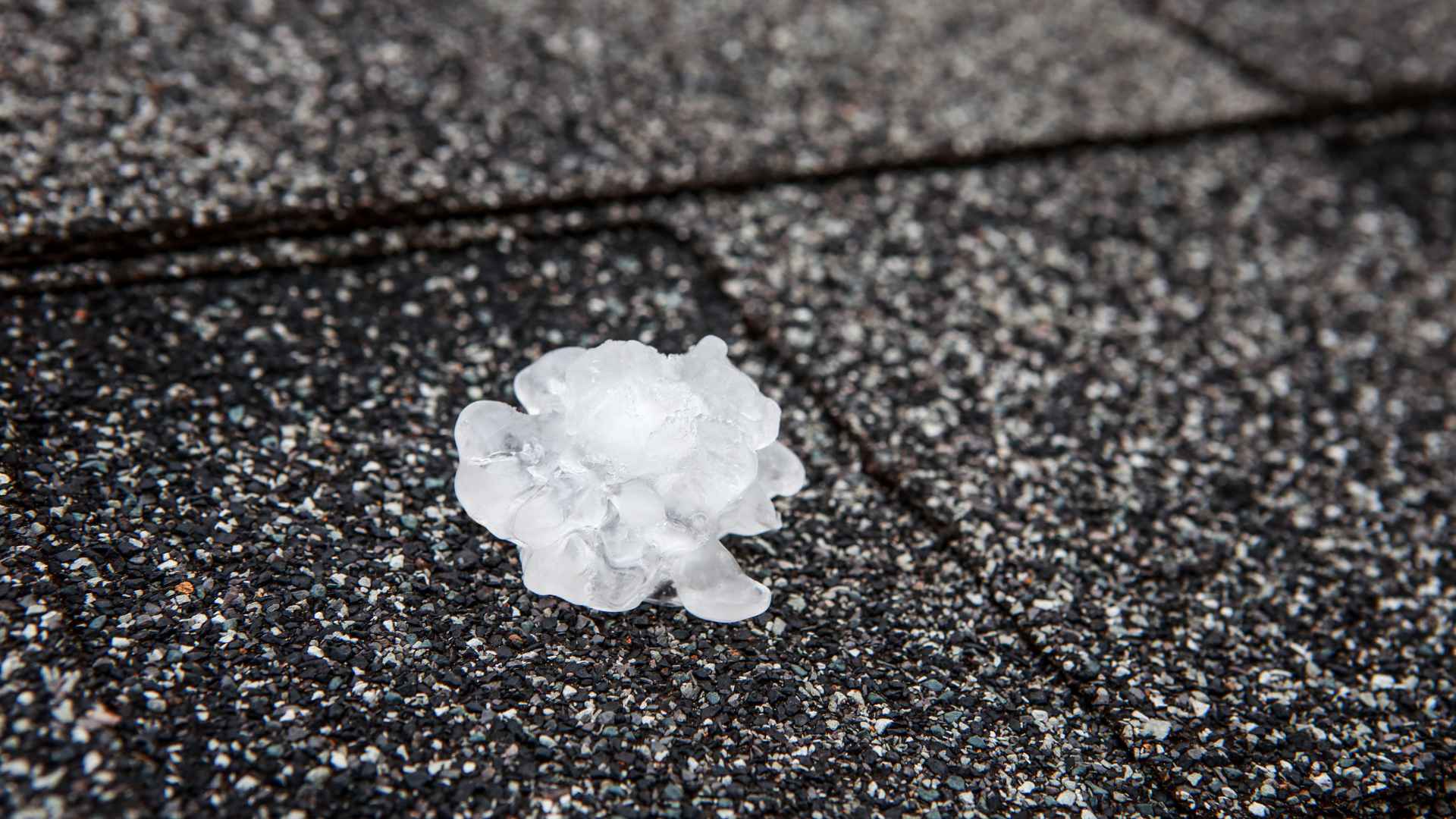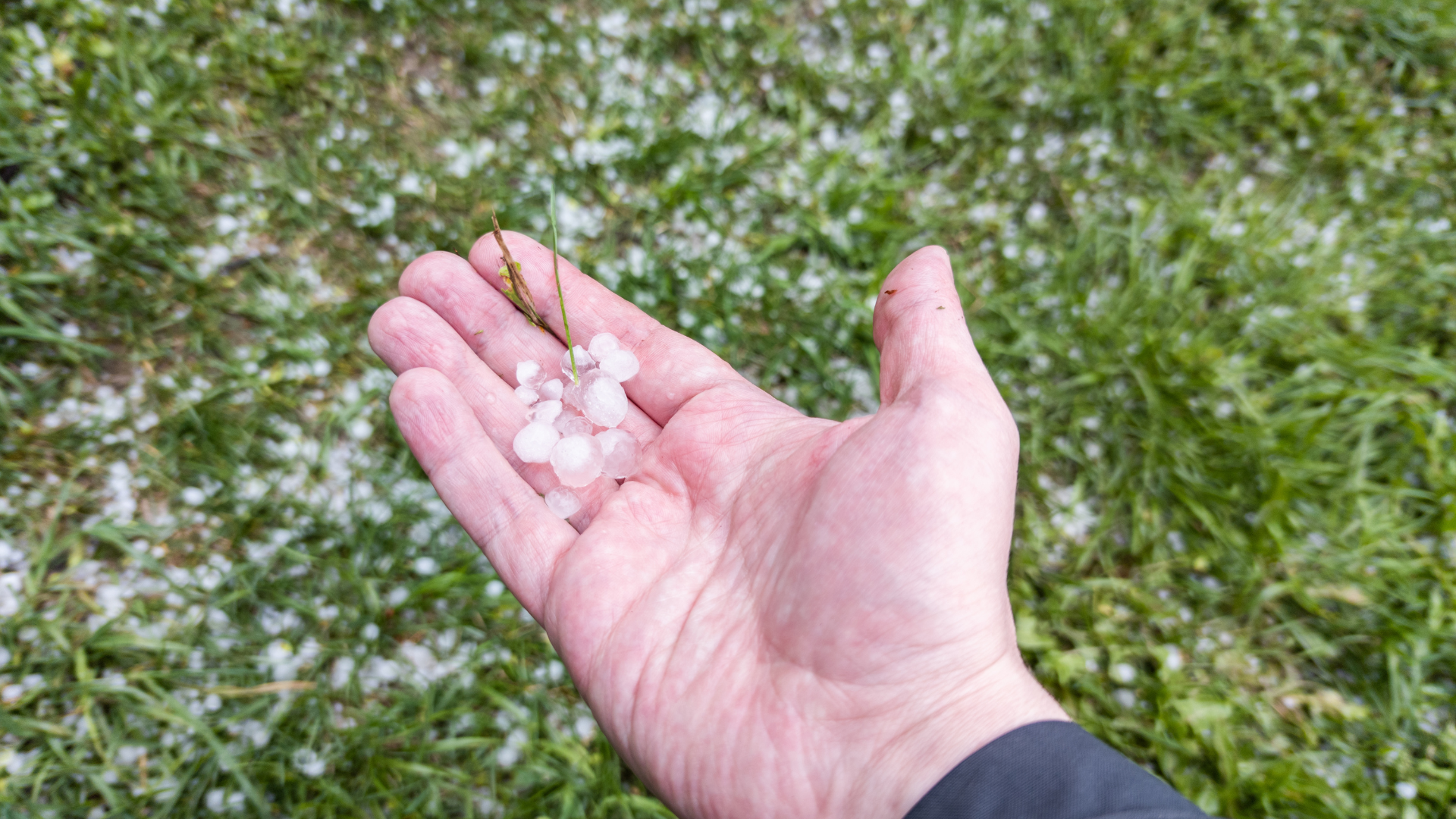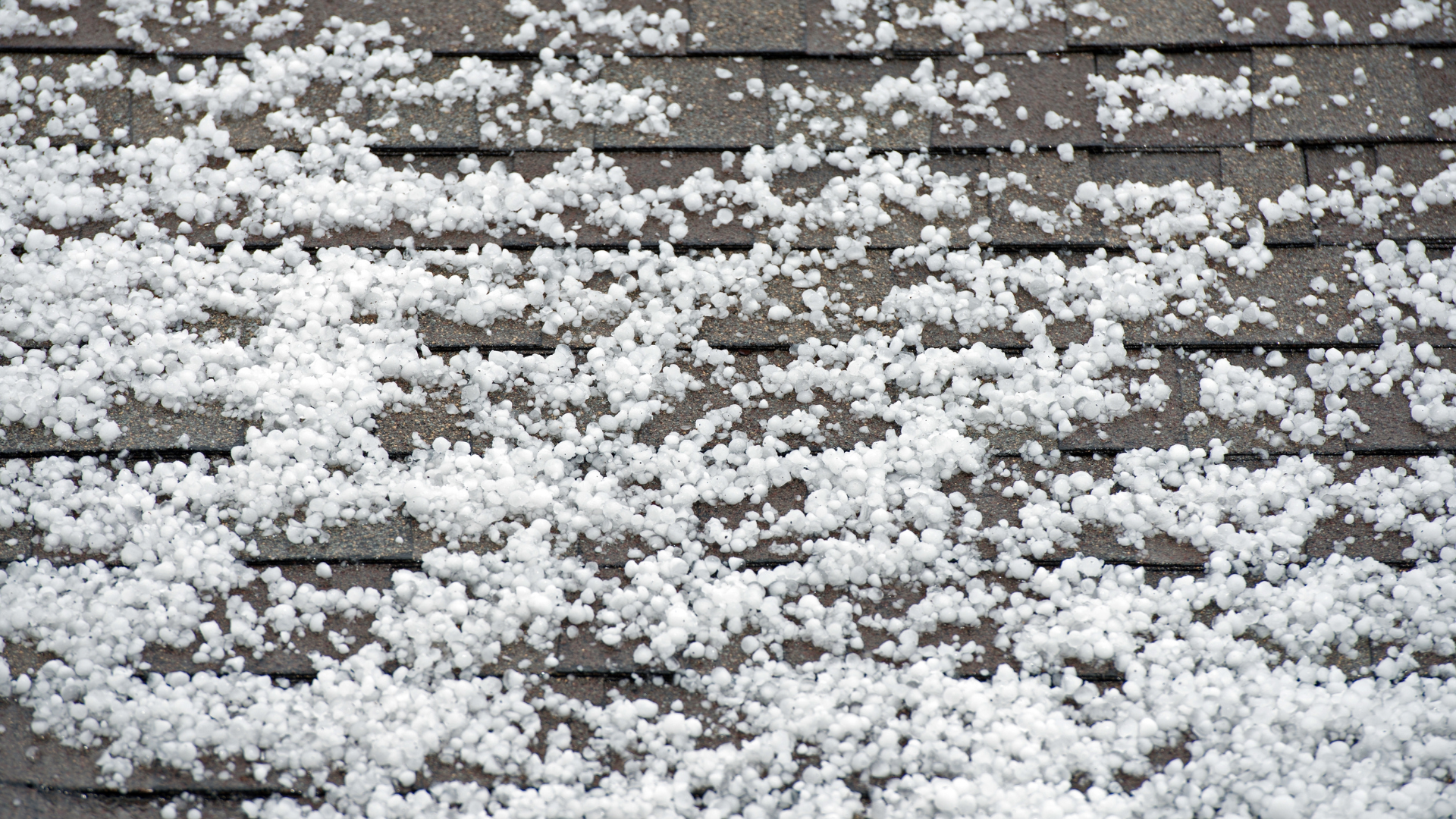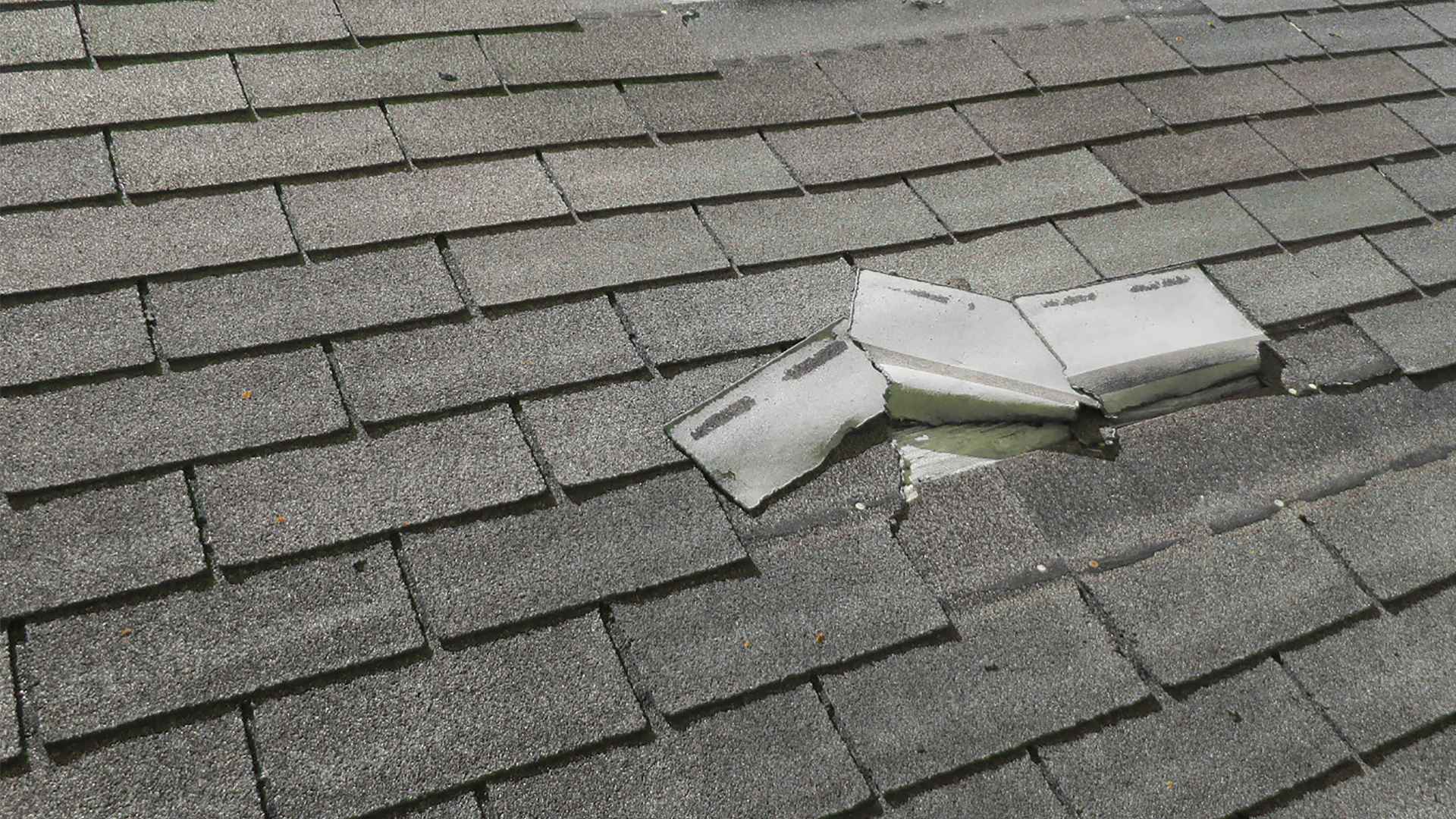According to recent research, 2023 may become the nation’s most expensive severe-weather year on record. In June alone, we saw billions of dollars worth of hail damage throughout the U.S., with experts estimating that hail accounts for 60-80% of all weather damage costs each year.
In other words, if you’re worried about hail damage to shingles, you’re far from alone! We’re no strangers to hail here in Maryland, and these tiny chunks of ice can batter a roof fast. Worse, even minor damage can impair your roof’s ability to protect your property.
It’s important for area property owners to understand how to spot, repair, and prevent hail damage. Here’s what you should know.
Spotting Hail Damage to Shingles
Hail damage can look different depending on the type of shingles you have on your property. In addition, some roofing materials can withstand the force of hail better than others. However, there are a few tell-tale signs that you may be dealing with roof damage.
If you can see damage to other areas of your property from the ground, you likely have hail damage on your roof as well. Dented gutters and downspouts, damaged or chipped siding, and divots in your air conditioner are all bad signs.
Once you get to your roof, the same is true of your roofing systems. If there are dents and dings on your vents and chimney covers, you may be looking at shingle damage.
If you have asphalt shingles, you’ll want to look for bruise-like marks where the granules have worn away. These areas may appear darker if the roof felt is exposed. They may also be soft to the touch compared to the surrounding surface.
If you have metal roof shingles, hail damage is even easier to spot. Dents, dings, and worn-off paint will often be obvious on the shingles.
If you have clay, slate, or other natural shingle roofs, you may notice cracks or gouges in the tiles. Wood shingles will often split down the middle, with or without a clear impact mark.
Getting a Roof Inspection
Though damaged shingles can sometimes be easy to spot, you won’t always be able to tell if hail has damaged your roof. Worse, subtle roof problems can snowball into major issues if not addressed.
Tiny fractures in your roofing system can expose the layers beneath. Precipitation, UV light, and temperature changes can further damage these unprotected layers. Over weeks or months, this can make your roofing system more susceptible to leaks, mold, and other damage.
That’s why we recommend getting a professional roof inspection. Most reputable contractors will offer this service free of charge.
An expert’s eye can spot signs of minor hail damage that may worsen over time. The reverse is also true, as contractors may be able to put your mind at ease if you’ve misidentified normal wear and tear as hail damage.
We also recommend getting a professional inspection for safety purposes. Without proper safety gear, property owners can put themselves in danger when walking on a damaged roof. If you do climb up to check your roof, make sure you’re wearing shoes with good traction, and have someone spot you on your ladder.
Repairing Your Roof Damage
If your contractor tells you that your roof has taken hail damage, your next step is repairs.
The good news is that most property insurance policies cover hail damage. However, be sure to read the fine print of your policy for details. Your insurance company may not cover roof repairs for cosmetic damage only, for example.
Property owners often have to file a claim within one year of the hailstorm. You’ll likely need to pay a deductible before your insurance payout.
You’ll also need to take pictures of the damage to show your insurance adjuster. You can do this yourself or ask your contractor to do it for you when they’re up on your roof.
When you get repairs, make sure you’re working with a contractor with experience working with insurance companies. Always read reviews and get multiple estimates before you choose a roofer for your repairs.
Preventing Future Hail Damage
Unfortunately, there’s nothing you can do to prevent all hail damage. Because we can’t protect or cover our roofs, they have to withstand impacts on their own.
However, there are a few ways to minimize your risk of hail damage.
First, keep your roof in good condition and never wait to make repairs. A roof with less wear and tear is better at withstanding the strong impacts of a hailstorm. This also means replacing an aging roof when needed.
You should also keep your trees trimmed. Hail that strikes and breaks a tree branch can cause massive damage to your roof.
If you’re in a position to construct a new roof or you’re buying a new property, opt for a roof with a steep slope. Flatter roofs do a poor job of weathering heavy impacts.
You can also switch to hail-resistant roof materials. Metal, rubber, and impact-resistant shingles are great choices. These options can also withstand strong winds and flying debris, which makes them good at protecting your property from storm damage in general.
Keep Hail Damage at Bay
Hail damage to shingles is more than an ugly blight. It’s also a dangerous blow that can wreak havoc on your roofing system. To avoid the headaches of leaks, mold, and further damage, make sure to inspect and repair hail damage right away.
Here at Landmark Roofing, our expert team has years of experience helping Maryland property owners deal with storm damage. No matter what the weather throws at you, we’ll help you repair or replace your roof. To learn more about what we can do, give us a call at (443) 223-7453 or fill out our online form for a free estimate.
Contact Us
After starting his first business at age 26, Artie Hendricks partnered with his best friend Rob Calhan and they have assembled a team of skilled and conscientious friends to be the core of Landmark Roofing. He largely credits his father’s strong and consistent work ethic and his father’s best friend Jerry, who owns a construction company and trained him through his first building experiences. Artie has since advanced through degrees in architecture, auto-CAD and construction management to build a business that prides itself on the care it shows for its work and its customers’ satisfaction.






